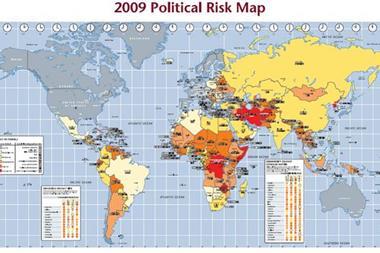The ex-head of German risk management association DVS describes his path to the top
What is your approach to risk management?
I believe risk management is essential. But, from my point of view, you cannot separate it from the management of business. Therefore I’m not a risk manager and neither are my colleagues in DVS Deutscher Versicherungs-Schutzverband e.V. because we don’t actually manage the risk. We can control the risk, show the risk, and offer support so that everybody can understand the risk and then deal with it.
I’m convinced there’s only one risk manager and that’s the CEO of a company. He’s the one managing the business. That means he has to organise his company in such a way that he gets all the information about risks and opportunities. The function named risk manager is therefore only a risk adviser; the management is within the CEO’s responsibility.
This approach avoids separating risk and opportunity management with different areas of responsibility.
How did you get into risk management?
I’m a lawyer and I started as the legal counsel with my previous company. Within a due diligence process I found out that a material risk was not sufficiently insured and therefore I proposed to ask for additional guarantees. This was proved right and necessary and saved the company a lot of money. As a result I was appointed head of risk management and insurance.
Has that coloured how you do risk management?
Yes and no. Lawyers know how to minimise a risk using special wordings in contracts. My approach is not to find broad forms of coverages, but to reduce all types of risk.
You might think that a lawyer is always interested in liability cases, but I’m interested in all kinds of insurance, especially property, marine and business interruption to support supply chain management.
Furthermore, I rely on the expertise of my team and have access to other professions, for example mathematicians, engineers and even a nautical captain.
I’m also interested in captive management. Every year you can decide on transferring risks to the insurance market or keeping them within the captive. A very good risk management tool is to organise internal underwriting; that means asking single group companies to pay different premiums depending on different exposures.
What about emerging risks?
The industry is facing more immaterial risks and damages and therefore we need better elaborated and tailor-made products to cover the risks of our member companies.
In your opening remarks at the DVS conference you touched on the fact that insurers need to make more progress on developing new products. Are insurers quick enough at responding?
This is one of my main concerns in the work I do with DVS. Insurers are talking about ERM, but the solutions they offer are not enterprise-wide or multiline, they are standalone and only support companies on different lines.
What about biodiversity and new liabilities? The insurers’ first reaction is to exclude new risks from the old forms. Now they are offering very small specialised covers for new liabilities and ask for additional premiums. This is a complete change of response. The typical ‘old’ liability form was designed to cover new risks as well.
How is the credit crunch affecting insurance buyers?
I’m convinced that the financial results of the non-insurance business are very important to support the premium income and to avoid increases in the premium. If insurance companies earn less money from their invested capital they try to increase their premium.
But do you think a hardening market might be dampened by the fact insurers have big reserves?
If the income from reserved assets is available, insurers are able to reduce the premiums. On the other hand, if there is no or less additional income, they will increase premiums.
Are directors and officers (D&O) liability risks increasing because of the credit crunch and are these going to push companies into buying more insurance?
I think companies are aware that the situation is more complex today and shareholders will try to get indemnification if they are convinced boards made mistakes. DVS heard rumours in the market that shareholders are preparing a lot of lawsuits relating to subprime problems. I think board members have good reason to ask for D&O protection not only for indemnification but also to organise legal defence if there is a lawsuit by shareholders. I expect increasing demand and increasing prices in this area.
What are your priorities as chairman?
To ask insurers for innovation. To find a good solution with Solvency II is also very important, as is creating more transparency in the remuneration system between brokers and insurers.

















No comments yet